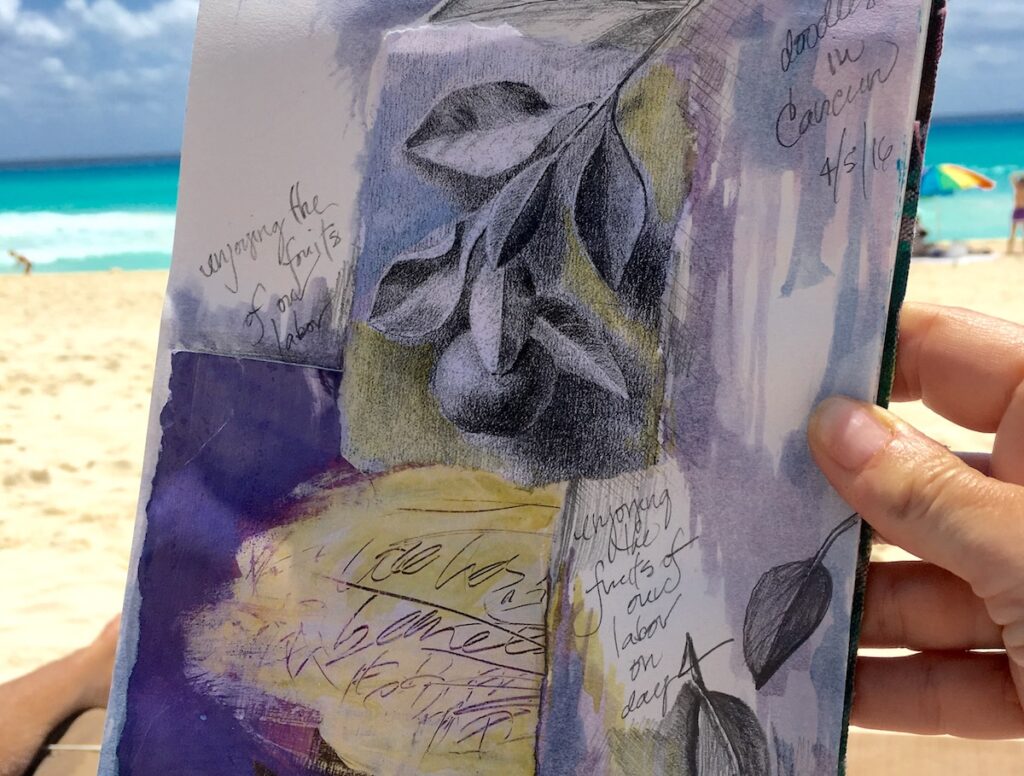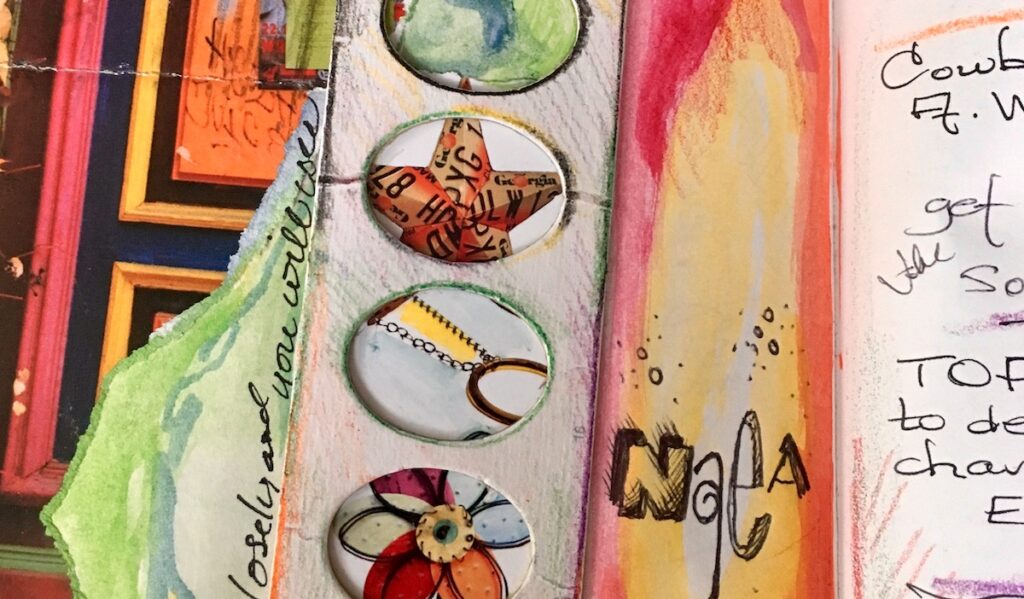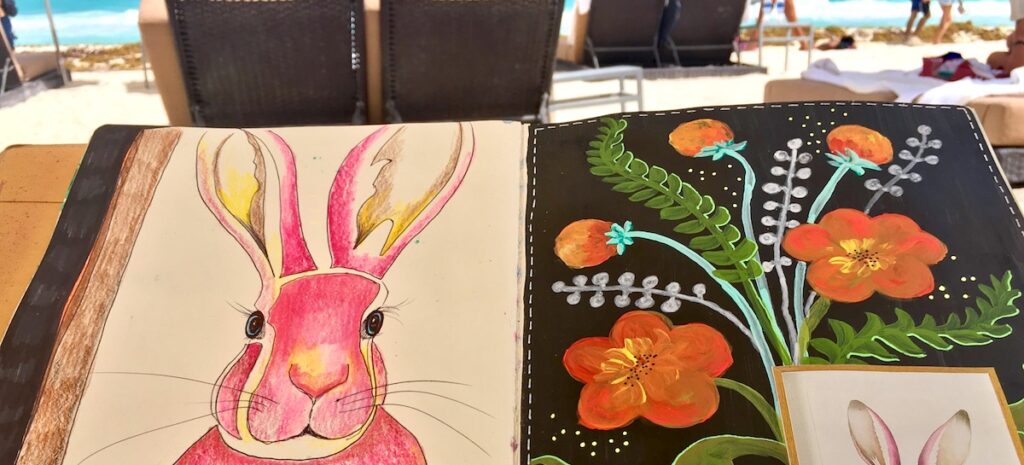Ahhhhh summer. A time when we get to immerse ourselves in our craft and be artists again! I have found that as much as I want to create during the school year, there just never seems to be enough time. So, instead, I make time to work in my visual journal at least four days a week during the summer months. The results are beyond beneficial! I feel better, I have time to reflect on the art of creating, and I always come up with some incredible lessons to take to my students. Plus, I push myself to work outside my comfort zone and include direct observation drawings in my journals. I require my students to do this in their weekly journals so it brings me back into the mindset of being a student again!
Here are 5 tips to help you stick with your journaling practice this summer.

1. Use prompts or themes.
I’ve found that prompts and themes work well to keep me focused.
Here are a few I tend to use:
- Who Am I?
- Family
- Fun
- Adventure
- Travel
- Reflections
- Beach
Think about how you could push your own artmaking skills as you come up with a list for yourself!
2. Keep your supplies in a handy travel case.
Consider storing everything you need in a small travel case. I like to include drawing pencils, a sharpener, markers, oil pastels, crayons, drawing pens, erasers, colored pencils, watercolors, a brush, and a glue stick. Of course, you need to bring your journal(s) too! I always have several journals going at once in a variety of sizes. Obviously, the smaller ones travel the best.

3. Consider including collage elements.
I love to collage, so I’m always collecting images, textures, small objects, words, and more. To make it easy to incorporate my findings into my journaling practice, I simply add envelopes to the backs of my journals. This way, anytime I come across something I find interesting, I can put it right into the envelope and it’s ready to be added to my art pages. I also enjoy bringing several fun stamps with me when I travel and use these to add layers to my final journal pages.

4. Make a commitment to journal daily.
I realize this sounds easier than it is, but the more you open your art journal, the more consistent your practice will become. Even if you only have time for a quick, two-minute contour line drawing, do it! You won’t regret it. Journaling truly is a fuel source for art teachers!
At the end of the summer, I love to go back and see the work I have completed, it becomes a sort of visual journey/documentation of my summer and one I always come back to school with to share with my students. I also urge my students to keep a visual journal of their own over the summer and bring these back in their advanced courses to share and use for inspiration in some of their project work.

5. Share your journals with your students.
I have found over the years that I am a lifelong learner. I take courses, exhibit my work, and seek out like-minded people to connect with. But, my favorite thing to do is CREATE and experiment with media. Immersing myself in this thing we call art keeps it real for me. Starting a journaling practice and sharing it with your students can be the start of building profound relationships. They’ll see you as a student, too – always working on your craft and documenting your learning.
In short, there are so many benefits to journaling. Find media that makes you feel excited about creating and get started! You might just be surprised by the amazing results!
Do you keep your own visual art journal to work in over the summer?
Do you work with prompts or themes in your own journals and/or your students’ assigned journal projects?
Magazine articles and podcasts are opinions of professional education contributors and do not necessarily represent the position of the Art of Education University (AOEU) or its academic offerings. Contributors use terms in the way they are most often talked about in the scope of their educational experiences.





